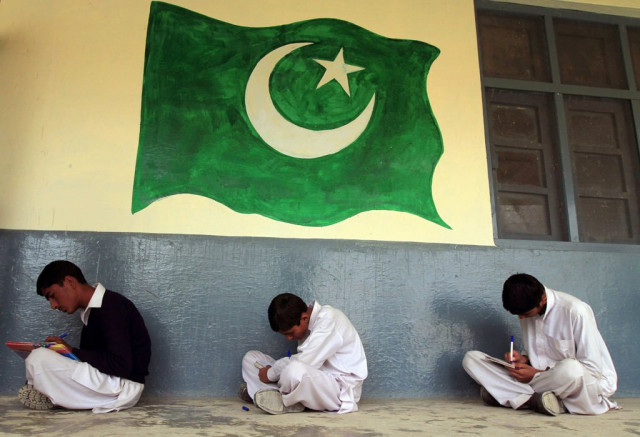The state of schools
The conditions under which children study explain the high number who fail to complete even a basic education.

The bottom layer of the educational pyramid must begin with the schools in the public sector. It is only when this tier is strong that we can build on it and create a system of education able to meet our needs at all levels. PHOTO: REUTERS/FILE
Yet even in our most developed province, Punjab, the condition of government schools is appalling. In this sense, the effort undertaken by the School Education Department (SED) to improve matters is encouraging. Eight thousand and six hundred schemes are planned for this purpose, and aim at providing schools with furniture, boundary walls, running water and other basic amenities. Rs1.8 billion have already been released for the purpose in January, ending a pattern under which long delays in fund disbursement held up work.
The SED decision follows a rather depressing report released by the same department in November 2013, which showed that 3.4 million students studying at government schools were without furniture. The cost of providing just this missing facility at these schools came to around Rs6.8 billion. There are also 5,000 schools without boundary walls, 1,950 without toilets, 1,000 without drinking water and almost 10,700 without electricity. The conditions under which children study explain the high number who fail to complete even a basic education. It would seem quite obvious that tackling these basic issues should be the key concern, ahead of setting up ‘model’ schools or distributing laptops to students. The bottom layer of the educational pyramid must begin with the schools in the public sector. It is only when this tier is strong that we can build on it and create a system of education able to meet our needs at all levels. The plan to place amenities in schools that lack even the most basic needs is a good one. We must hope that it succeeds and can indeed be expanded.
Published in The Express Tribune, January 28th, 2014.
Like Opinion & Editorial on Facebook, follow @ETOpEd on Twitter to receive all updates on all our daily pieces.















COMMENTS
Comments are moderated and generally will be posted if they are on-topic and not abusive.
For more information, please see our Comments FAQ